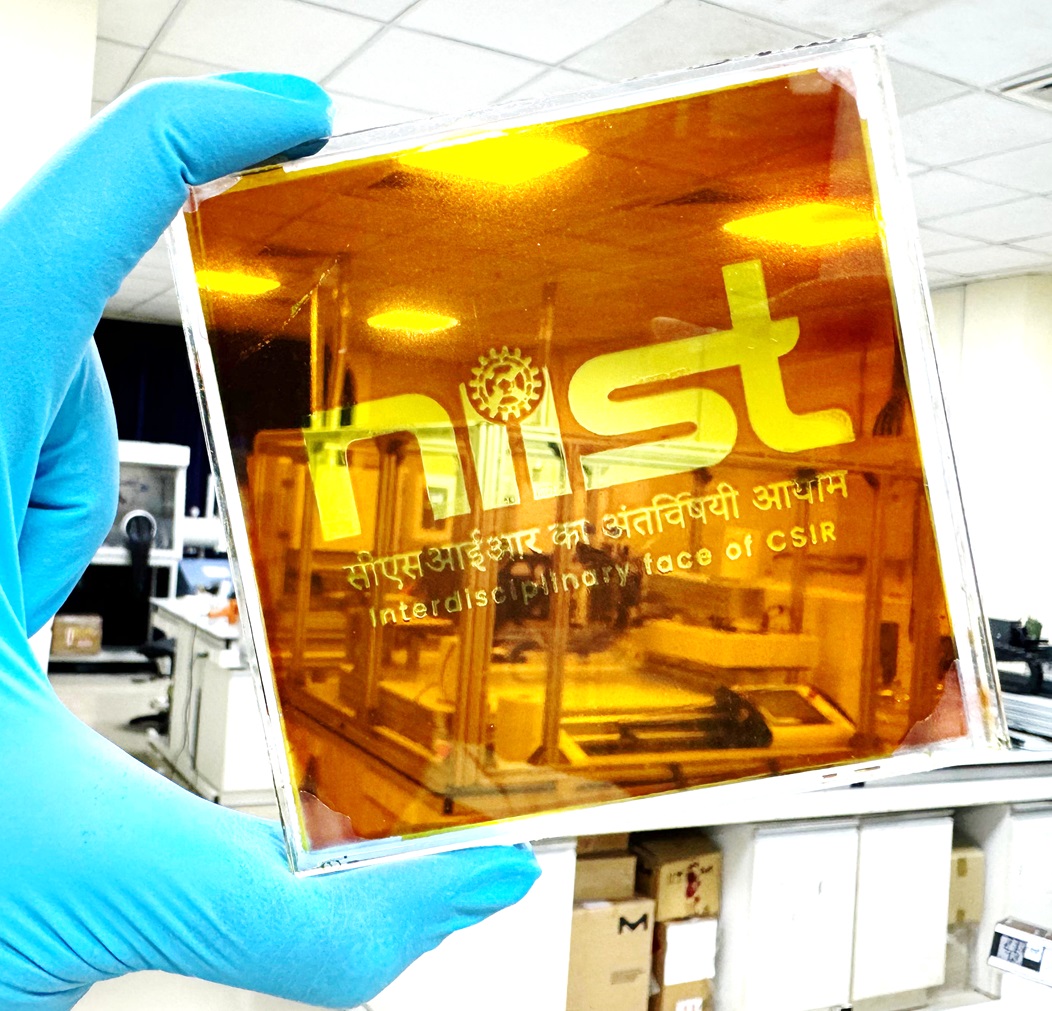CSIR-NIIST scientists set new efficiency record of 35.6% in indoor photovoltaic using solar cells
A sustainable alternative to one-time use primary batteries
Trivandrum / January 16, 2024
Thiruvananthapuram, Jan 16: In a technological milestone, scientists at CSIR-National Institute for Interdisciplinary Science & Technology (CSIR-NIIST) here have set a new efficiency record of 35.6 per cent in indoor light harvesting using dye-sensitized solar cells (DSCs), which can provide a sustainable alternative to one-time use primary batteries and also reduce environmental pollution.
This technological feat has received global recognition as its details have been published in the Royal Society of Chemistry's Journal of Materials Chemistry A.
Dr. C. Anandharamakrishnan, Director, CSIR-NIIST, said the integration of DSCs into IoT (Internet of Things) systems offers a sustainable solution by creating self-powered devices that operate for extended periods without the need for battery replacements.
“It will reduce the environmental pollution resulting from the disposal of billions of dead and used batteries annually. It will be a boon for consumer electronics and portable devices”, he added.
“This remarkable feat marks a significant advancement in indoor photovoltaic technology as DSCs are emerging as the leading indoor light-harvesting technology. Their unique semi-transparent nature, coupled with an array of colours and designs, opens up avenues for innovative applications, including integration into glass facades, greenhouses and architectural installations within indoor spaces,” he pointed out.
Led by Dr. Suraj Soman, scientist at the Centre for Sustainable Energy Technologies (C-SET), CSIR-NIIST, employed a novel dual-species copper electrolyte approach. Copper is not only abundant but also environmentally-friendly, which enhances its commercialization potential, compared to conventional iodine electrolytes.
DSCs, developed in the 1990s by Michael Grätzel at EPFL, Switzerland, mimic photosynthesis in plants. Their eco-friendly and affordable nature makes them the top choice among indoor photovoltaic technologies. The current advancement involves careful modification of the copper metal center's coordination environment, addressing recombination issues and enhancing performance, particularly in indoor conditions.
The CSIR-NIIST team successfully demonstrated the technology by creating a self-powered temperature sensor that operated independently under indoor illumination, eliminating the need for batteries.
Dr. Narayanan Unni, Head of Centre for Sustainable Energy Technologies at NIIST, pointed out that powering electronic devices and realizing self-powered IoTs through indoor light harvesting would lead to a greener and more sustainable future, by reducing the number of throw-away primary batteries.
The team also recently introduced a bi-layer photoanode architecture achieving a record high voltage of 1.27 V under full sun and 1.025 V under indoor illumination from a single device, highlighting the technology's versatility. This was published last year in the Journal of Materials Chemistry A.
Dr. Anandharamakrishnan said CSIR-NIIST is presently engaged in translating this technology by developing innovative self-powered prototypes and products as well as exploring new applications to significantly reduce dependence on primary batteries, contributing to a reduced carbon footprint and thus addressing climate change.
References:
J. Mater. Chem. A., 2024,12, 1081
J. Mater. Chem. A, 2023, 11, 14748
ENDS




